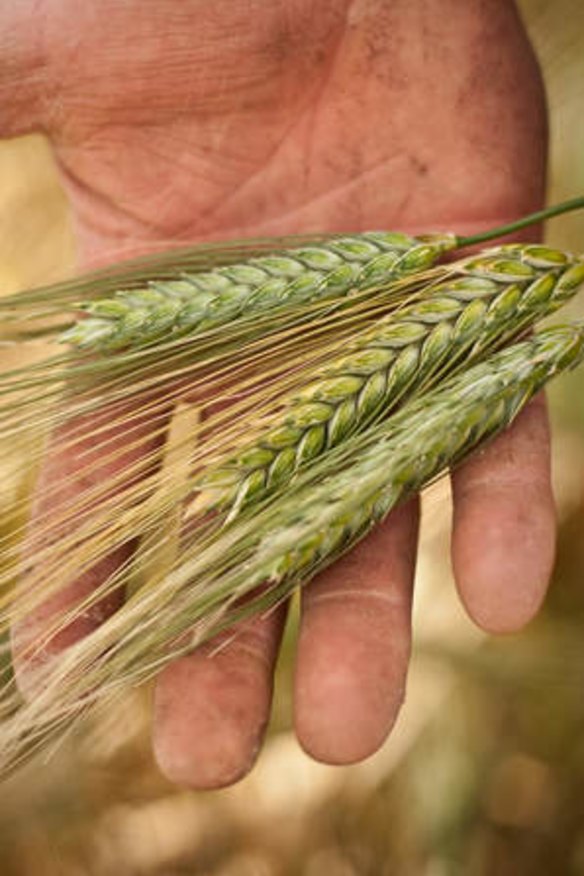What is the difference between farro, spelt and freekeh?

What is the difference between farro, einkorn, spelt and freekeh? C. Fraser
Centuries ago, Western civilisation had a midlife crisis and dumped a whole lot of wholesome and dependable grains for a newer, more glamorous species from the same genus - namely, wheat. We mostly stopped growing grains such as einkorn (Triticum monococcum), spelt (Triticum aestivum spelta) and farro (Triticum turgidum dicoccum) in favour of modern wheat varieties such as durum (Triticum durum).
Freekeh is made from modern wheat varieties that are harvested green then roasted. Einkorn is still grown in parts of Europe on poor soils. In France, it is called petit epeautre, or ''little spelt'', and in Italy, it is called farro piccolo or ''little farro''. It can be cooked in a chewy pilaf or tossed through a salad with beans and tomatoes.
Farro, sometimes called emmer, can be cooked as one would steam brown rice and added to salads, but is delicious made into farrotto, similar to risotto, or simmered in chicken stock with sauteed carrots and celery to make soup. Spelt is high in protein and quite commonly ground into flour and used in baking. Depending on how the grains are processed, they may require soaking before cooking.
How can anyone eat persimmons? They are vile. E. Latz
Oh dear. There are two types of persimmon. One is mouth-puckeringly astringent until it ripens to form an aromatic jelly inside. The other can be eaten like an apple. I think you may have tried the former. The persimmons that are ready to eat are varieties such as fuyu and its more colourful cousin, jiro.
Varieties such as nightingale need to be ripened at room temperature to break down the flesh inside, lose their astringency, and reach their voluptuous and heady jelly-like best.
What can I do with jars of old marmalade? C. O'Neill
There is a great chef called Suzi McKay, who used to grow all her vegetables for her restaurant long before it was fashionable. She smoked her lamb racks in the flue of a wood stove and had a collection of aged hand-made preserves. I tracked her down to her restaurant, the Five Fires, at the Jordan in Port Lincoln.
Although I have not found any health authority information to back her statement, she claims: ''Properly made marmalade never goes off. It ages like wine.'' She reeled off a series of ideas on how to use aged marmalade: try it in a bread-and-butter pudding made with croissants; or a steamed pudding with marmalade at the bottom of the bowl; or a dipping sauce or marinade for steamed snapper with ginger, chilli, fish sauce, soy sauce and marmalade.
''When I had the Harvest Home Hotel,'' she says, ''I would sear a duck's breast, slather it in aged marmalade, then throw it into a stinking-hot oven and serve it with a baked eggplant seasoned with Moroccan spices.''
What is the difference between Israeli cous cous and moghrabieh? K. Lang
Israeli cous cous, or ptitim, is made from wheat-flour paste that is extruded to make pearl-like balls and was developed in Israel during the mid-20th century. It is cooked like pasta and used in salads. Moghrabieh is a cous cous made from semolina, hand-rolled and eaten throughout the Arab world. Cooked in seasoned chicken stock and served with meats, it is delicious.
Letters
The sausage correspondence continues, with J. Simpson writing: ''Around 1965, when I was 13, I worked on Saturday mornings making sausages for [butcher's name omitted for legal reasons] in Cronulla. These sausages were very popular, with people travelling from afar to buy them. One day we had a visit from a Food Authority inspector who took away various samples. X was subsequently prosecuted and fined for selling sausages that contained insufficient fat. When this was reported in the media, we were inundated with customers. It was highly suspected, though never proven, that X and the inspector were wartime mates.''
Send your queries to brainfood@richardcornish.com.au
Restaurant reviews, news and the hottest openings served to your inbox.
Sign up- More:
- Restaurant news
